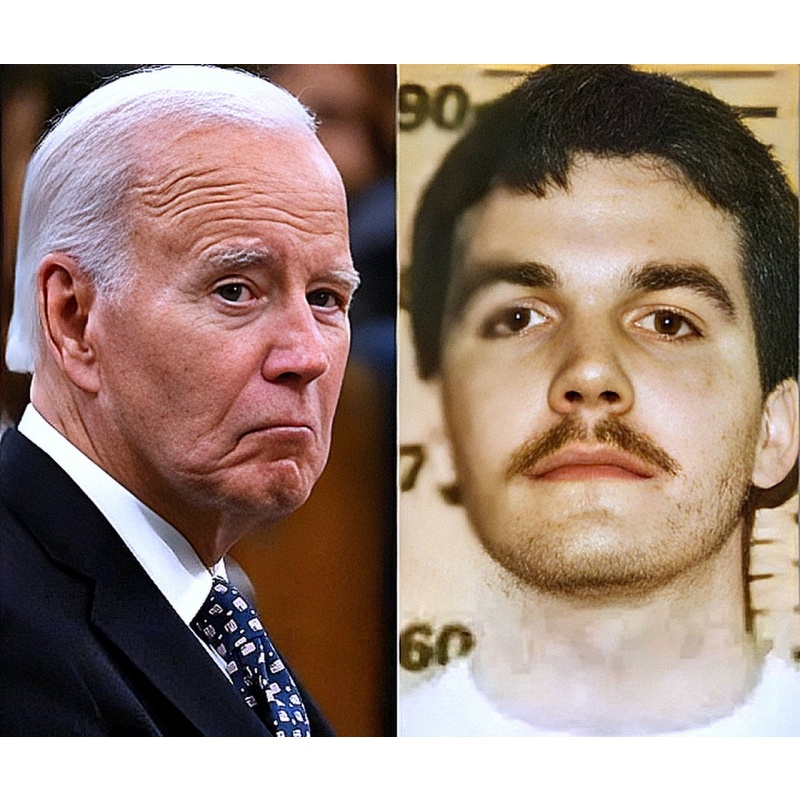SHANNON WAYNE AGOFSKY | Death Row Commutation Refused | Convicted and Sentenced to Death for the Stomping Death of a Prisoner in a Federal Prison | Autographed Letter Signed
LongfellowSerenade 67
Shannon Wayne Agofsky, a double murderer, was convicted in the 1990s for the brutal bank robbery and drowning murder of Missouri bank president Dan Short. Agofsky was already serving life without parole when he delivered a fatal beating to fellow inmate Arvel "Ray" White inside the concrete confines of USP Leavenworth in 2001. Agofsky was sentenced to death, a penalty he later resisted having commuted, arguing it robbed him of critical legal protections. His case raises profound questions about the boundaries of punishment and the paradox of mercy within a justice system built on finality. President Joe Biden commuted the death sentences of multiple federal inmates in December 2024, but Agofsky rejected the commutation, arguing that being on death row afforded him unique legal protections.
$50.00
- Postage
-
Standard Shipping
$0.00 to United States
Get Additional Rates
- Select Country
- Zip/Post Code
- Quantity
Description
Shannon Agofsky. Autographed Letter, Signed. Handwritten, Commercial #10 (4.125 × 9.5 envelope). Indianapolis, IN. June 3, 2025. Content unknown. SEALED.
Shannon Wayne Agofsky’s name is etched into the annals of American criminal history as a rare breed of double murderer: one whose violence extended beyond the free world into the locked cages of federal prison. Convicted in the 1990s for the brutal bank robbery and drowning murder of Missouri bank president Dan Short, Agofsky was already serving life without parole when he delivered a fatal beating to fellow inmate Arvel “Ray” White inside the concrete confines of USP Leavenworth in 2001. For that second murder, Agofsky was sentenced to death—a penalty he later resisted having commuted, arguing it robbed him of critical legal protections. His case is a macabre portrait of control, brutality, and the strange legal paradox of a man fighting to stay on death row.
Chains, Concrete, and the Killer’s Code: The Story of Shannon Wayne Agofsky
Shannon Wayne Agofsky was born in the mid-1960s in the heart of America’s Midwest, a region where towns are small, reputations travel fast, and crime often hides behind the illusion of rural calm. Details about his early life remain largely sealed from public scrutiny, but what is certain is that he came of age alongside his brother Joseph, and together, they would commit one of the most heinous crimes to ever shake the Ozarks.
In the fall of 1989, the Agofsky brothers meticulously planned the robbery of the State Bank of Noel, Missouri. Their target was Dan Short, a well-liked bank president and respected member of the community. On October 6, they stormed his home in the dead of night, forced him at gunpoint into their custody, and drove him to the bank he managed. There, under extreme duress, Short opened the vault. The brothers stole approximately $70,000 in cash and coins.
But they weren’t finished. Fearing identification, they bound Dan Short to a weighted chair, attached him to a concrete block using heavy logging chains, and threw him alive into Oklahoma’s Grand Lake of the Cherokees. He drowned in darkness—his last moments spent submerged, restrained, and terrified. His body was discovered days later by fishermen. What they saw would haunt them for life.
The FBI took interest quickly, and by 1990, Shannon Agofsky was arrested after law enforcement discovered rolls of nickels in his car—rare currency stolen during the robbery. Forensic evidence, including fingerprints on duct tape used to bind Short, sealed his fate. Convicted of armed robbery and conspiracy, Agofsky was sentenced to life without parole in federal prison. His brother Joseph was also convicted and would later die in prison under mysterious circumstances in 2013.
Prison, however, did nothing to dull Agofsky’s appetite for violence.
Murder in the Yard
On January 5, 2001, the prison yard at USP Leavenworth in Kansas became the site of another chilling homicide—this one, witnessed by cameras, staff, and other inmates. Shannon Agofsky, then a lifer, confronted Arvel “Ray” White, a fellow inmate who was not armed and did not initiate the confrontation. In what witnesses described as a ruthless attack, Agofsky repeatedly struck White in the face and head, then continued stomping on his head after he had fallen. The assault left White with catastrophic injuries: a broken jaw, a fractured skull, and severe internal trauma. He died days later from blunt force trauma to the head.
The motive? Some said it was dominance. Others whispered about a prison code. Whatever the trigger, Agofsky never expressed remorse—and never denied it.
Federal prosecutors charged him with first-degree murder. The government, fed up with Agofsky’s continued violence behind bars, sought the death penalty. During the trial in 2004, prosecutors showed video of the attack and called prison staff who testified to its calculated brutality. The jury returned a verdict of death.
Agofsky was sent to USP Terre Haute, home of the federal death row, where he would spend the next two decades fighting the sentence he had once earned—and eventually, the clemency he did not want.
A Man Who Refused Mercy
On December 23, 2024, President Joe Biden commuted the death sentences of multiple federal inmates as part of a sweeping clemency initiative. Shannon Agofsky’s name was on the list. His sentence was reduced to life imprisonment without parole.
But Agofsky did something unprecedented: he rejected the commutation. Through his attorneys, he argued that being on death row afforded him unique legal protections—including broader appeal rights and deeper constitutional scrutiny. Removing him from death row, he claimed, violated his ability to challenge his conviction effectively.
The courts disagreed. In early 2025, a federal judge ruled that a presidential commutation does not require the recipient’s consent. Agofsky, once condemned and now spared, remained locked away with no further appeal to his execution.
He continues to file legal motions, but his odds are narrow, his freedom nonexistent, and his notoriety assured.
The Victims: Silenced in Two Worlds
Dan Short, the bank president, was a father, a brother, and a community figure. His murder shattered the small town of Noel, Missouri. The town’s faith in safety evaporated overnight. His death prompted increased attention to rural bank security and sparked community-wide trauma.
Arvel White’s death received less attention but no less brutality. He was an inmate, yes, but a human being—killed in what should have been a controlled environment. His family never received the same media coverage, but they buried him just the same.
Why It Matters
Shannon Wayne Agofsky’s case raises profound questions about the boundaries of punishment. When a man already serving life without parole murders again, what recourse remains? His death sentence once served as society’s ultimate answer. His refusal to accept clemency threw into sharp relief the paradox of mercy within a justice system built on finality.
Epilogue: The Signature of a Killer
For collectors in the world of true crime memorabilia, a Shannon Wayne Agofsky autograph is rare. Very few have surfaced. Its appeal lies in its chilling provenance: a double murderer, a death row inmate who fought the system both to the gallows and away from them. For those fascinated by the darker edges of American criminal history, his signature is a trophy—a reminder that evil does not always come cloaked in legend, but often in bureaucracy, barbed wire, and legal filings.
- VIDEO: Killer Brothers- Death Row Executions Shannon Agofsky- I don't want clemency! ep 2 | https://youtu.be/9dXFUUdhfcM
- VIDEO: Forensic Files - Season 9, Episode 9 - Stick 'em Up - Full Episode | https://youtu.be/N8bpwu4AgJo
Archiving Protocol:
• Handled with White Gloves ab initio
• Photo Pages/Sheet Protectors: Heavyweight Clear Sheet Protectors, Acid Free & Archival Safe, 8.5 × 11, Top Load
• White Backing Board—Acid Free
Shipping/Packaging: Rigid Mailer 9.5 × 12.5. The Kraft cardboard is white, self-seal, and stay-flat, ensuring it does not bend. Heavy cardboard, which has strong resistance to bending and tearing, makes each rigid mailer sturdy. These mailers are significantly thicker than those used by the USPS. Shipping cost is never more than it absolutely has to be to get it from me to you.
Payments & Returns
- Payment Methods
- PayPal, Money Order
Postage & Shipping
- Item Location
- 49858, Michigan, United States
- Ships To
- Worldwide
- Pick-ups
- No pick-ups
- Shipping Instructions
- Shipping costs to international destinations will be applied to this auction. Please contact us if you have any questions about shipping to your location.
- Returns Accepted
- No

-800x800.jpg)


-800x800.jpg)


-500x500.jpg)
-500x500.jpg)


-500x500.jpg)
